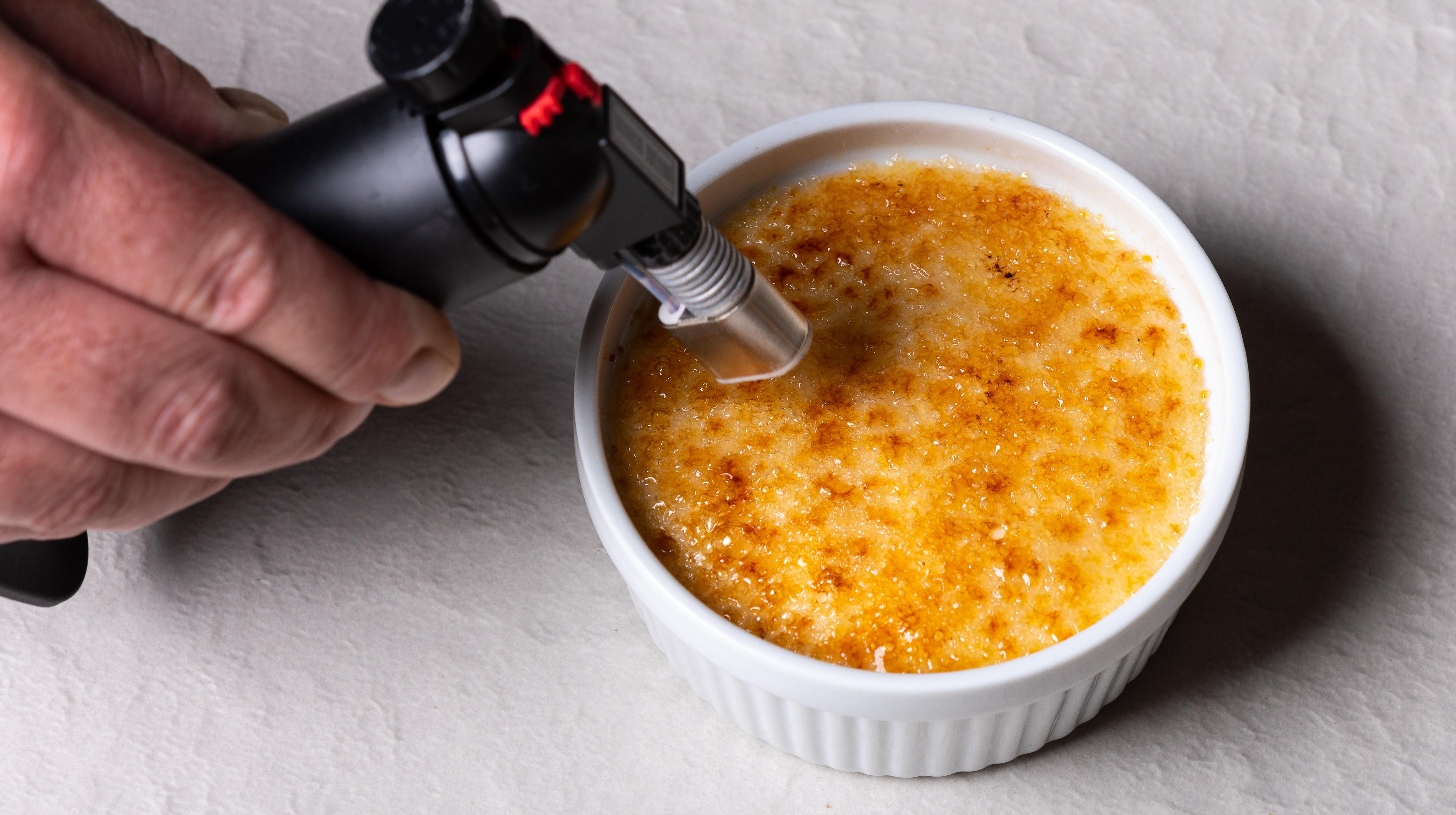The Best (And Worst) Ways To Use A Kitchen Torch
This tool isn't something you use every day, but when you need it, nothing else will do.
I don't use a kitchen torch very often, but when I do, I feel like an absolute badass. Who wouldn't feel that way, blasting fire like you're handling a tiny flamethrower? Besides its cool factor, I've come to realize that it's a pretty powerful cooking device, and since it delivers so much concentrated heat to such a small surface area, it's something you need to use with a careful hand. Yes, I am in love with my kitchen torch. So what is it actually good for, beyond crème brûlée?
How to use a kitchen torch while cooking
We should talk about crème brûlée first. The custardy European dessert is defined by its thin glassy shell of caramelized sugar, and you can't really accomplish that kind of surface with anything but a torch. While a broiler will sort of do the trick, a handheld torch offers the precision and control you want when you're looking to achieve the perfect shatter.
You'll want to gently apply the tip of the flame across the surface of your sugar-topped custard and move it side to side quickly. As the sugar starts to bubble, you need to move that torch away from that spot, as it'll blacken almost immediately, which means you've already burned it.
You can also use the torch to toast the top of a meringue, but you're really going to want to be gentle, as you can blacken it quickly. Start the flame far away from the surface of the dessert and slowly creep the torch forward until you see color developing on the meringue's peaks.
I'm guessing you probably aren't whipping up a crème brûlée or meringues all the time, so let's talk about savory stuff. My other favorite use for a kitchen torch is to char peppers of all sorts, from bell peppers to jalapeños; the hit of flame gives them a nice fire-roasted flavor that does wonders for salsas, roasted tomato dishes, and romesco sauce.
I do it in tandem with the stovetop; since I have a gas stove, I just put a pepper directly on the burner, and turn the stove on low. As one side roasts in contact with the stove's flame, I'll gently scorch the other side of the pepper with my kitchen torch, accomplishing the perfect char in half the time. You can use the torch to fill in the little gaps that the stove missed, too, as you flip the pepper occasionally on the burner.
Do not use a kitchen torch on these foods
Because the torch works by projecting a concentrated open flame, you run the risk of burning the shit out of anything you're toasting. As tempting as it might be to try, a kitchen torch really isn't the best tool to use to sear a piece of meat. The surface will basically just go straight from seared to scorched, which will add an acrid, unappealing flavor to your food.
The same goes for cheese. I know it's going to be tempting to use this thing indiscriminately on cheese—we all long for that baked, bubbly surface—but if you're trying to toast something like mac and cheese, any blackened spots are going to taste straight up charred, and not in a good way. That's doubly true if the mac has any sort of breadcrumbs on top. Putting the torch in direct contact with a slice of cheese will also blacken it, so only use it at enough distance from the surface that the cheese will melt, not scorch.
Oh, and I probably don't have to tell you this, but don't go waving your torch around in front of your face or someone else's. There's a safety mechanism on a kitchen torch so that it doesn't fire indiscriminately, but even so, you probably want your eyes and eyebrows intact for the rest of your life. Keep it away from children, and never leave them unattended with it.
Using a kitchen torch does take some practice, so be prepared for some minor fails along the way. What's fortunate is that if you go a little overboard, all you have to do is scrape the burnt surface off and you'll probably be fine. It's worth the trial and error for all the extra flavor you'll manage to flamethrow onto your food.
